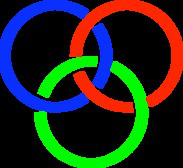Orateur
Prof.
L. U. Ancarani
(U. Metz, France)
Description
We study some formal aspects of the exterior complex scaling (ECS) method when imple-
mented for both short and long{range two{body potentials. We raise some questions, provide some answers, and propose a distorted-wave reformulation within a ECS approach. Particular attention is put on the applicability of the method to the pure two-body Coulomb potential. Complex scaling has been for a long time an important tool to study the structure of atomic systems as well as resonance states. The extension to two{body collision problems was performed by Rescigno and co-workers, see e.g. Ref. [1]. Since this rst application to scattering, the ECS has proved to be one of the most successful numerical methods to deal with a large variety of collision processes between two or three particles (see, e.g., [2]). In Ref. [1], the authors showed how to deal with long-range potentials, but explicitly mentioned that the method does not apply for Coulomb potentials. Recently, the Coulomb case has been under scrutiny in a series of papers dedicated to the ECS approach [3]; in this respect, our work complements their investigation. In view of the numerical success of the ECS method, and the importance of the Coulomb potential, we present a revision of the method for two-body scattering problems [4]. We propose a Coulomb-distorted initial state reformulation within which the ECS approach can be equally applied to long-range potentials including the pure Coulomb case, in contrast with a statement of Ref. [1]. Furthermore, when performing the exterior complex rotation, the ECS recipe requires the introduction of an (unbalanced) articial cut-off of the potential. For the pure two-body Coulomb potential we present an analytical and numerical study of this procedure, identify some inconsistencies, and propose an alternative (balanced) procedure which leads to a well-defined scattering problem. The two-body case allows one to illustrate all the ingredients and associated
difficulties of the ECS method. A similar analysis applies to three-body problems.
[1] T. N. Rescigno et al, Phys. Rev. A 55 (1997) 4253
[2] T. N. Rescigno et al, Science 286 (1999) 2474; C. W. McCurdy et al, J. Phys. B 37 (2004) R137; C.W. McCurdy and F. Martin, J. Phys. B 37 (2004) 917
[3] M. V. Volkov et al EuroPhys. Lett., 85 (2009) 30001; S. L. Yakovlev et al, J. Phys. A 43 (2010)245302
[4] G. Gasaneo , L. U. Ancarani and D. M. Mitnik, submitted for publication
Author
Prof.
L. U. Ancarani
(U. Metz, France)
Co-auteurs
Dr
D. M. Mitnik
(UBA, and IAFE - CONICET, Buenos Aires, Argentina)
Dr
G. Gasaneo
(UNS - CONICET, Bahia Blanca, Argentina)

